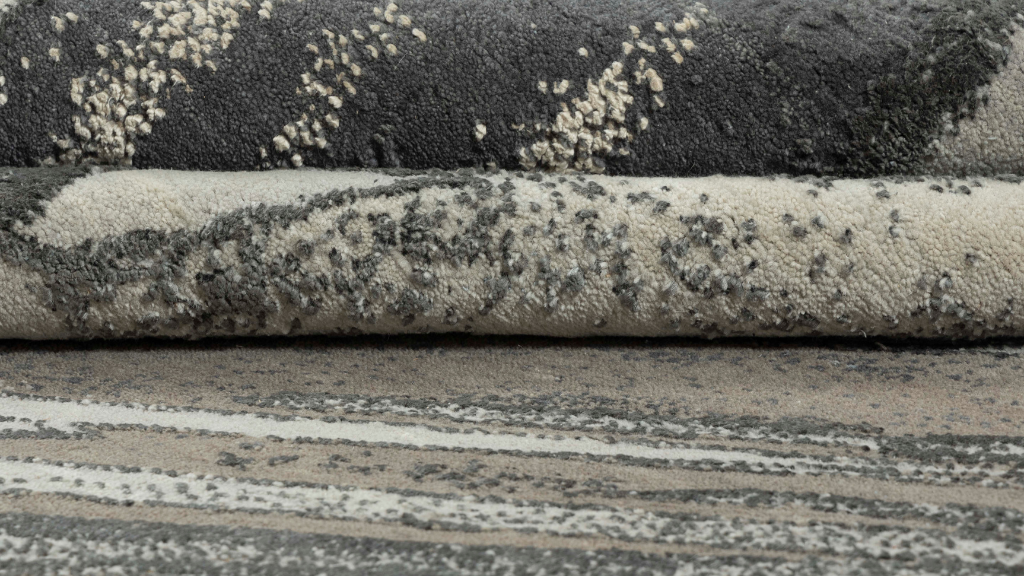Authenticity and workmanship are becoming more and more valued in today’s fast-paced, mass-produced society. This admiration is demonstrated by handmade rugs, which provide more than simply a floor covering—rather, they are a work of art that conveys a tale of talent, tradition, and eternal beauty.
The Artistry Behind Handmade Rugs
Traditional techniques that have been passed down through the years are used to create handmade rugs. Every rug, be it Moroccan from the Atlas Mountains, Turkish from Anatolia, or Persian from Iran, brings with it the distinct cultural legacy of its place of origin.
1. Tradition and Craftsmanship
Handmade rugs need a lot of labor and sophisticated processes. Raw materials, such as wool or silk, are meticulously sourced and prepared before being used by artisans. The act of weaving itself is a talent that takes years to become proficient in. Each knot knotted and each thread braided is evidence of the weaver’s skill and commitment.
2. Significance to Culture
Handmade rugs have cultural and symbolic significance in addition to being aesthetically pleasing. Colors, themes, and patterns can represent religious beliefs, tribal relationships, and/or local identities. For instance, the geometric patterns of Moroccan rugs represent mathematical accuracy and spiritual ideas, whereas the elaborate floral designs of Persian rugs frequently depict nature and beauty.
3. Ethical and Sustainable Production
Handmade carpets provide a sustainable option in a world when sustainability is becoming more and more important. When compared to synthetic alternatives, they have a smaller environmental impact because they are usually made of natural fibers and dyes. Moreover, buying handcrafted rugs contributes to the preservation of traditional crafts that are in danger of going extinct due to industrialization and supports artisan communities.
Timeless Beauty in Every Thread
Handmade carpets are artworks that have the power to completely change a room, not merely useful floor coverings. Here’s how to do it:
1. Distinctive Patterns and Varieties
Every rug produced by hand is unique. Because of the unique touch of the artist, even rugs from the same area can differ in pattern and color. Because of its distinctiveness, a handmade rug becomes the talk of the room and an object of respect. It gives any space character and charm.
2. Sturdiness and Extended Life
Handmade carpets are well known for their durability, in contrast to mass-produced rugs that could wear out quickly. With the right maintenance, these rugs should last for many generations due to their excellent craftsmanship and use of premium materials. They frequently increase in value over time and are passed down through families as heirlooms.
3. Flexibility in Design
Handmade carpets go well with many different interior design aesthetics, including traditional and modern. There is a handcrafted rug to fit every taste and environment, whether you choose a bold, modern Kilim rug in a minimalist setting or an antique Persian rug in a classic living room.
Making an Informed Investment
Buying a handmade rug is an investment in craftsmanship, tradition, and cultural legacy. It’s more than just a transaction. When selecting a handmade rug, keep the following things in mind:
1. Understand Your Sources
Knowing a rug’s composition—wool, silk, cotton, or a combination—will help you evaluate its longevity and quality. Natural fibers age nicely and are typically more robust.
2. Think about Knot Density
Rug quality and complexity are influenced by the density of its knots. Increased knot density can add to the rug’s durability and aesthetic appeal and is often indicative of superior craftsmanship.
3. Genuineness and Origin
Make sure the rug you are buying is genuine and comes from an ethical source. Seek out trustworthy vendors who can tell you about the rug’s history, artistry, and cultural significance.
Caring for Your Handmade Rug
Your handmade rug’s beauty and lifespan can be extended with proper care and maintenance:
1. Continual Cleaning
Frequently vacuum your rug to get rid of dust and debris. Avoid using a vacuum cleaner with a beater bar and treat fringes gently.
2. Periodically Rotate
To guarantee uniform wear and fading, rotate your rug periodically, particularly in areas with heavy usage.
3. Expert Housekeeping
For thorough cleaning and stain removal, think about hiring a cleaning service. Always adhere to the cleaning guidelines supplied by the rug’s seller or maker.

Conclusion: Bringing Home a Piece of History and Art
Embracing authenticity through handmade rugs enables us to maintain connections with traditions, support artisan communities, and add timeless beauty to our homes in a world when mass production frequently rules. Every stride on a rug’s elaborate patterns reveals a new chapter in the story of care, artistry, and craftsmanship. Investing in handcrafted rugs not only enhances our living areas but also helps to preserve a centuries-old rich cultural legacy. Let’s keep honoring and celebrating these works of art so that future generations can continue to benefit from their legacy.


